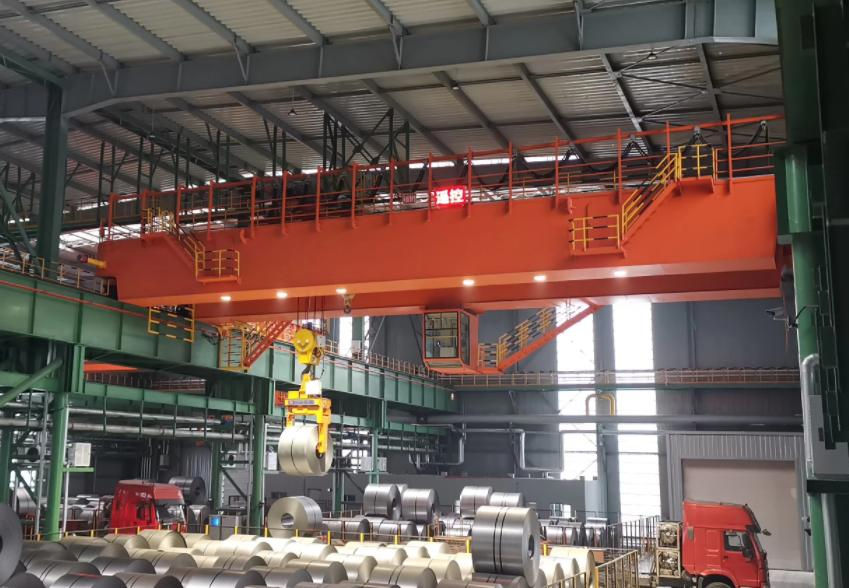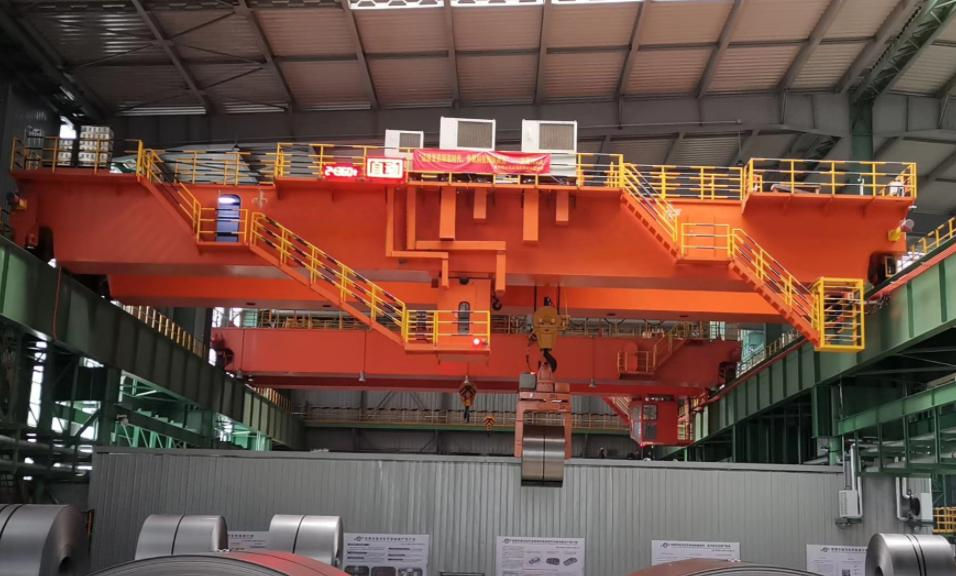The Role of Operator Training in Efficient 40 Ton Bridge Crane Operation
- charlespsnow
- Aug 27, 2025
- 4 min read
Bridge cranes are integral to industrial operations where heavy loads must be lifted, transported, and positioned with precision. Among them, the 40-ton bridge crane is a widely adopted model, striking a balance between high lifting capacity and operational versatility. However, no matter how advanced the crane’s engineering may be, its efficiency and safety ultimately depend on one crucial factor: the competency of the operator. Proper operator training plays a pivotal role in maximizing crane performance, minimizing downtime, reducing risks, and ensuring overall productivity. This article explores the importance of operator training, the areas it covers, and how it contributes to efficient 40-ton bridge crane operations.

Why Operator Training is Critical for 40 Ton Bridge Cranes
Operating a 40 ton bridge crane is far more complex than simply pressing buttons or pulling levers. The scale of loads involved, combined with the precision required, makes it a task where small mistakes can have severe consequences. Without adequate training, operators may not fully understand the mechanical limits, control systems, or safety protocols of the crane. The following points highlight why training is indispensable:
Safety Assurance:A 40-ton load mishandled during lifting or travel poses a catastrophic risk to workers, equipment, and infrastructure. Training ensures that operators know how to handle loads safely and prevent accidents.
Operational Efficiency:Skilled operators can move loads with accuracy and speed, avoiding unnecessary delays, repeated maneuvers, or excessive downtime.
Equipment Longevity:Proper training reduces wear and tear on the crane by teaching operators how to avoid overloading, unnecessary shock loading, or improper handling that could damage structural and mechanical components.
Regulatory Compliance:Many regions mandate certification and documented training for crane operators to comply with occupational safety and health regulations.
Cost Reduction:By minimizing accidents, damage, and downtime, training directly contributes to lower operating costs and higher profitability.
Core Areas Covered in Operator Training
Comprehensive operator training for a 40-ton bridge crane involves both theoretical knowledge and hands-on practice. The curriculum generally covers the following aspects:
1. Understanding Crane Design and Functions
Operators are trained to recognize the main components of a bridge crane: the bridge girders, trolley, hoist, runway, end trucks, and electrical systems. Knowing how these parts work together helps operators understand performance limitations and identify potential issues.
2. Load Capacity and Limits
One of the key focuses is the crane’s rated capacity. Operators learn the significance of the 40-ton maximum load, the implications of dynamic loading, and how to use load charts or indicators. Overloading is one of the leading causes of crane failure, and training ensures operators never push the crane beyond its safe limits.
3. Control Systems and Maneuvering
Modern bridge cranes may use pendant controls, radio remotes, or cab-based systems. Training ensures operators are proficient in whichever control method is employed. Smooth maneuvering is critical to efficiency, especially when handling bulky or fragile loads.
4. Rigging and Load Handling
Even if riggers are present on-site, crane operators must understand proper rigging practices. Training includes knowledge of slings, shackles, spreader beams, and other load attachments. Operators learn how to identify secure rigging, maintain balance, and prevent swinging loads.
5. Pre-Operation Inspections
Operators are trained to conduct routine checks before each shift. This includes inspecting the hoist, wire ropes, hooks, brakes, and limit switches. Identifying problems early reduces downtime and prevents accidents.
6. Emergency Procedures
Training emphasizes how to respond to emergencies, such as power failures, brake malfunctions, or rigging failures. Quick and informed decisions during emergencies can save lives and protect assets.
7. Communication and Coordination
Efficient crane operation is often a team effort. Training emphasizes the importance of clear communication with riggers, supervisors, and ground staff using standard signals or radios to avoid miscommunication.

Benefits of Well-Trained Operators in 40 Ton Bridge Crane Operation
When operators are adequately trained, the advantages go beyond simple compliance—they significantly impact operational performance.
1. Enhanced Productivity
Operators trained in precision movements reduce the number of trial-and-error maneuvers when positioning loads. This leads to faster task completion, reduced cycle times, and smoother workflow across the facility.
2. Reduced Downtime
Downtime in crane operations often results from equipment failure or operator errors. A trained operator knows how to handle the equipment properly, reducing the chances of costly breakdowns or stoppages.
3. Improved Workplace Safety
Accidents involving a 40-ton load can be catastrophic. Training dramatically reduces risks by ensuring operators understand safe lifting techniques, working load limits, and emergency protocols.
4. Cost Savings
Every accident, repair, or delay adds to operational costs. Proper training lowers the frequency of these events, leading to significant savings in repair bills, insurance claims, and lost productivity.
5. Operator Confidence and Morale
A confident operator who feels competent in their role works more effectively and with less stress. Training builds confidence, which in turn enhances operational efficiency.
Continuous Training and Refresher Programs
Bridge crane technology is continually evolving, with improvements in automation, remote monitoring, and safety systems. Operators must stay updated with these changes through continuous training programs. Refresher courses also reinforce best practices, correct bad habits that may have developed, and ensure compliance with updated safety regulations.
Some companies invest in simulation-based training tools that replicate real-life crane operations. This allows operators to practice handling complex situations without the risk of accidents or equipment damage. Such modern training approaches improve readiness and adaptability.
Management’s Role in Supporting Training
While training is critical, its effectiveness depends on management’s support. Employers should:
Provide Regular Training Opportunities: Ensure that all operators receive initial and ongoing training tailored to their specific crane systems.
Encourage a Safety-First Culture: Promote policies where safety and training are valued as much as productivity.
Invest in Certification Programs: Partner with accredited training providers for operator certification.
Evaluate Performance: Regular assessments of operator skills help identify areas where additional training may be needed.
Conclusion
The role of operator training in the efficient operation of a 40-ton bridge crane cannot be overstated. Beyond compliance and safety, it directly influences productivity, equipment longevity, and cost-effectiveness. A well-trained operator ensures smooth, precise, and reliable overhead bridge crane operations, minimizing risks while maximizing efficiency. In today’s competitive industrial landscape, investing in operator training is not merely a legal or safety obligation—it is a strategic decision that drives long-term success.










Comments